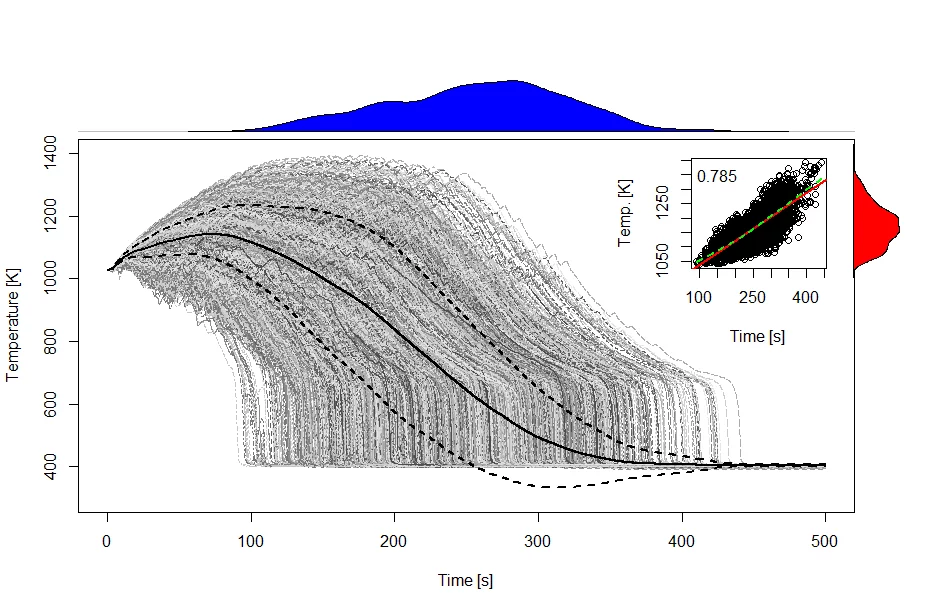Global Sensitivity Analysis and Registration Strategy for Temperature Profiles of Reflood Experiment Simulations
Global sensitivity analysis (GSA) is routinely applied in engineering to determine the sensitivity of a simulation output to the input parameters. Typically, GSA methods require the code output to be a scalar. In the context of thermal-hydraulic system code, however, simulation outputs are often not scalar but time-dependent (e.g. temperature profile). How to perform GSA on these outputs? A common solution is to represent the profile with a few selected scalar values and perform GSA on these scalar values. This is illustrated in the figure where stochastic samples of a temperature profile resulting from a quenching transient are obtained with the TRACE code in grey and where the maximum temperature and quenching time are chosen as scalars of interest. Their probability distributions, respectively shown in red and blue, can be used to perform GSA. However, these scalars might not be representative of the mixed variations in time and amplitude observed in the output of a typical transient. In this work we address the issue by studying two registration procedures – Landmark and Square Root Slope Function (SRSF) – which separate the amplitude and phase/time variations of the temperature profiles. We then perform dimension reduction by principal component analysis (PCA). PCA allows us to represent the variability of the phase-aligned time series in a few fixed eigenvectors representative of the transient physics and in their associated scalar eigenvalues, which are suitable for GSA. We compare the two registration procedures and the classical “scalar-of-interest” approaches using the Sobol’ indices sensitivity measure. This work received the best paper award at the Best Estimate Plus Uncertainty (BEPU) conference held in May 2018 in Lucca, Italy.


